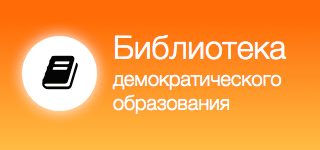A Guide to Creating Community Schools: The Approach and Experiences of Five Countries in Eurasia
- Author / organization: Sarah Lindemann-Komarova
- September 5, 2006 Added by Фомина Елена Views: 1882
- Topics: Community School, Community School NGOs
- Document type: Textbook, Manual
The book provides a step-by-step approach to developing a community school, introduces some advanced community development technologies, and demonstrates that the CS model is a very effective mechanism for mobilizing communities to address their needs in the widest range of social, economic and political environments.
This handbook was created on the basis of eight years of experience in the development of a community school model that was developed in Siberia and documentary material for how it is being implemented successfully today in 5 countries: Armenia, Georgia, Kazakhstan, Kyrgyzstan and Russia. The purpose for this book is fourfold:
-
Provide a step-by-step approach to developing a community school (CS) for those who are interested in implementing this idea.
-
Introduce some advanced community development technologies for those who are already using the model.
-
To respond to one of the greatest needs in the community school movement today by providing an opportunity for community school practitioners to exchange information about their experiences.
-
To demonstrate that the community school model is a very effective mechanism for mobilizing the community to address their needs in the widest range of social, economic and political environments.
At first we introduce the reader with the brief history of the community school concept as it first appeared in America. This is followed by a description of the model as it was developed in Siberia and adapted to the transition environment in Russia. From Siberia the community school model has successfully expanded to other regions of Russia as well as other CIS countries. The strength of the model has been proven by its flexibility to not only generate positive results in all 5 countries, but, it has provided a foundation for practitioners to develop new methods that reflect the principles the model promotes. We include in handbook over 100 methods.
The methodological part of the book starts with presenting the basic tools for developing a community school. This technology is well known and used in the business and nonprofit sectors. This is followed by Parts 3-5 that corresponds to the three components of the community school model we represent: Democratization of Schools and Classrooms, Volunteerism and Mutually Beneficial School-Community Partnership.
Part 6 looks at Resource Mobilization or, how you can generate increased financial resources for your school, community and other worthy social causes. Part 7 provides an overview of what is happening in the broader community school movement today and the mechanisms that are being used to promote the model on a local, national and international level.
We believe this handbook demonstrates that strong communities will lead to a strong and healthy democracy and that is our shared goal. How do we measure that? The strength of a democracy cannot be measured in terms of economic wealth or military might. Neither money nor weapons can sustain a democratic society if the people are not active participants in that process. What makes democracy most sustainable has been best described by American Humanities Professor, Andrew Delbanco, “Democracy thrives only if it sees to the universal distribution of hope.” Thus, the way to measure the strength of a democracy is the degree to which its people have hope, hope that there will be justice, hope that their children will be properly clothed and fed, hope for decent housing and healthcare and equal access to education and a job. Hope that our children will live in peace with dignity and respect towards all citizens of the world. Today, more than ever, this may seem an impossible goal but it is the only goal worth striving for. This book demonstrates that community schools are a mechanism for generating hope now in Armenia, Georgia, Kazakhstan, Kyrgyzstan and Russia.
The full text of the book you can receive by writing to the Krasnoyarsk Centre for Community Partnerships at e-mail. The size of the file is about 4MB.
We encourage the reproduction of this material (in part and in total), but ask that you credit the author and IFES and that you show a full citation for this book. Thank you.
Imprint
Yerevan, 2004. IFES, Sarah Lindemann-Komarova.





